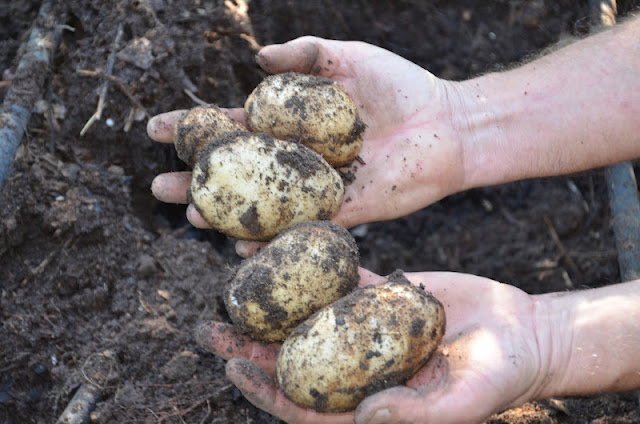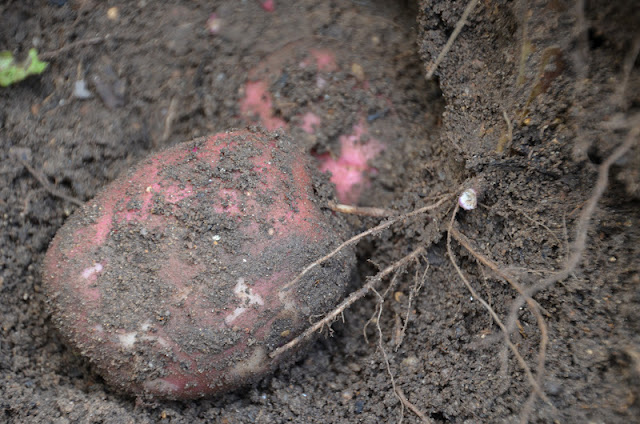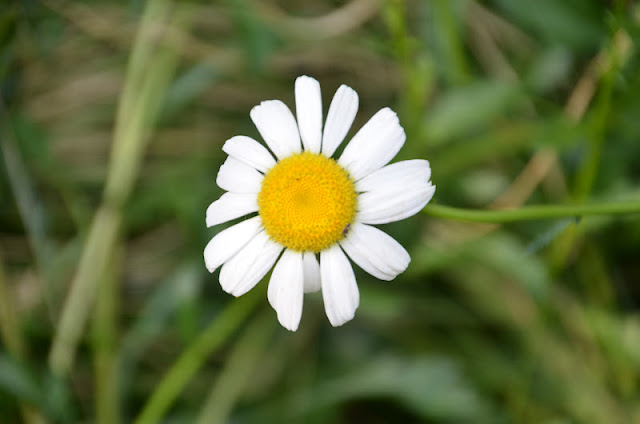The ‘Wonderful’ variety of pomegranate tree has large orange-red
flowers and deliciously tangy purple-red fruit.
Well, at least that’s what the label says. I’ve yet to see a flower or fruit, so at this
point I’m going on faith.
I have wanted to try growing a pomegranate tree for
awhile. I was just waiting for the right
opportunity to present itself. I needed
to find a spot in full sun with good drainage and I just couldn’t decide on the
perfect location until recently.
No one likes to
see a beautiful, stately oak tree die before it’s time, but the recent removal
of a dead tree presented me with a pomegranate planting opportunity.
To get my pomegranate tree off to the best start
possible, I’m going to plant it using the recommended planting instructions
provided on the grower’s label. The
first step is to dig a hole three times the diameter of the root ball.
The instructions recommend setting the top of the root ball
two inches above grade, so be careful not to dig the hole too deep. Planting a tree too deeply is probably the biggest planting mistake that people make when planting a new tree.
I like to mix compost into the native soil. My soil ranges from sand to clay, but this
site contains a sandy loam that is more on the sandy side. The compost will help the soil retain
moisture, which the pomegranate will appreciate.
Fill in the hole and create an ample basin around the
tree. A large water basin will ensure
the water soaks down into the root ball where it is needed for the tree to get
established.






























